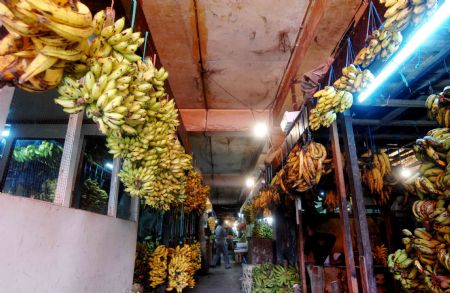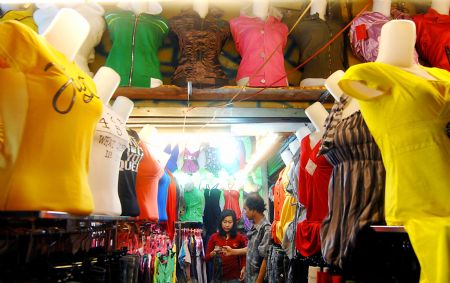China-ASEAN free trade area starts operation
11:14, January 02, 2010
China and the Association of Southeast Asian Nations (ASEAN) kicked off their free trade area (FTA) on Friday.
The world's largest FTA embracing developing countries covers a population of 1.9 billion and involves about 4.5 trillion U.S. dollars of trade volume.
The world's largest FTA embracing developing countries covers a population of 1.9 billion and involves about 4.5 trillion U.S. dollars of trade volume.

The average tariff on goods from ASEAN countries to China is cut down to 0.1 percent from 9.8 percent.
The six original ASEAN members, Brunei, Indonesia, Malaysia, the Philippines, Singapore and Thailand, will slash the average tariff on Chinese goods from 12.8 percent to 0.6 percent. By 2015,the policy of zero-tariff rate for 90 percent of Chinese goods is expected to extend to the four new ASEAN members, Cambodia, Laos, Myanmar and Vietnam.
Dozens of trucks, mostly carrying dragon fruit from Vietnam, thronged border markets Friday morning, waiting to be unloaded at the Tianyuan Fruit Trade Market, one of China's largest market for fruit import, at the Pingxiang Port in Guangxi Zhuang Autonomous Region.
"The establishment of the free trade area is really good news for me," said Liu Yuzhen at the Tianyuan market, who has been trading fruits for 16 years.
She now sells more than 10 tonnes of apples, pears, oranges and other fruits to southeast Asia every day, and hopes her business will expand as the FTA will facilitate the customs clearance and reduce the logistics cost.
Gu Xiaosong, vice president of the Guangxi Academy of Social Sciences, said both ASEAN members and southern China provinces abound with tropical primary products like rubber and tropical fruits, and thus competition in the earlier stage of the FTA will be unavoidable.
"But such competition will eventually lead to optimization of the agricultural and industrial structures in the region, which will help form a more competitive entity in the global market," he said.
There is a provision in the FTA for a temporary delay in tariff reduction by reclassifying goods as "sensitive" and "highly sensitive" products.

High-tariff items that include automobiles, rice and some petrochemical products are listed as "highly sensitive," thereby allowing both sides to reduce their tariffs below 50 percent by 2015 for original ASEAN members and 2018 for new members.
"China's efforts to establish the FTA aim not only at expanding overseas markets, but also promoting trade and investment liberalization, especially amid the global trade protectionism," said Zhang Monan, an economist with the State Information Center.
China and ASEAN members could cooperate in wider fields, from natural resources to high technologies, she said. "The further economic integration between the two sides could be very competitive in the global economy."
Her comments were echoed by Yang Tianpei, chairman of Malaysia-China Chamber of Commerce.
"China wants raw materials while Malaysia needs daily use articles and electric and mechanical products," he said. "The FTA will facilitate trade and reduce the prices."
"The Chinese enterprises can build factories in Malaysia to further reduce costs as well as increase jobs and revenues in Malaysia," he said.
Zhang said the FTA would also facilitate more cross-border yuan trade settlements and currency swap agreements between China and ASEAN members.
The cooperation will help ASEAN members become less dependent on the U.S. dollar, which has become highly volatile as a result of the global financial crisis, she said.
China's Vice Commerce Minister Gao Hucheng said earlier the establishment of the FTA will promote the regional economic integration, benefiting companies and consumers.
China and the ASEAN launched their cooperation dialogue in 1991 and signed the China-ASEAN Framework Agreement on Comprehensive Cooperation in 2002.
Source:Xinhua

No comments:
Post a Comment